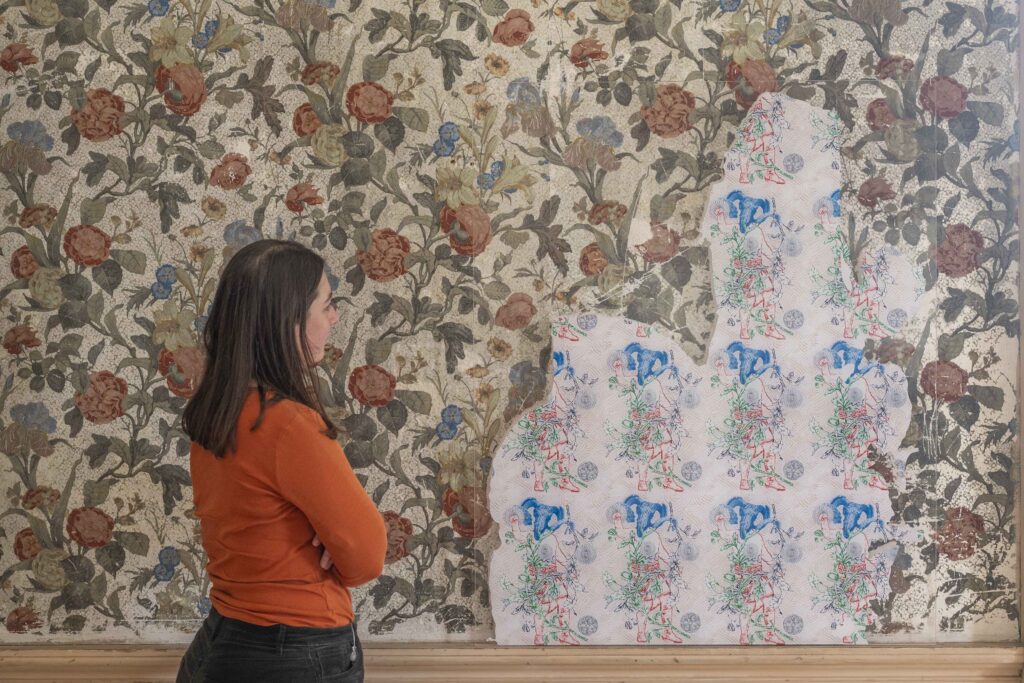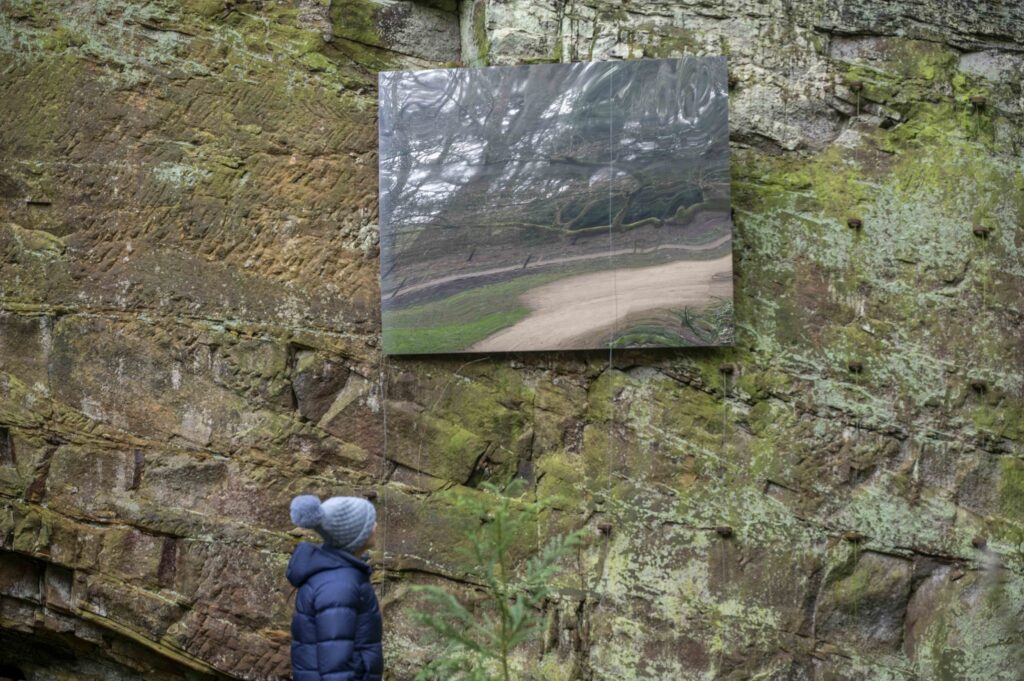
For artist and photographer Ingrid Pollard, it was a year spent in ‘wonderland’.
Ingrid, appointed as English Heritage’s first visual art fellow, was presented with the opportunity of a year-long fellowship at Belsay Hall in Northumberland.
Spread out before her was a medieval castle and an impressive 20 acres of gardens, including the location’s atmospheric Quarry Garden with its micro climate.
But the star of the show was Belsay Hall itself, built in the Greek Revival style and started in 1807, estate owner Sir Charles Monck and family finally moved in on Christmas Day, 10 years later.
Tomorrow (Feb 8) an exhibition of works based on Ingrid’s year opens under the title There is Light in the Fissures, and will run until July 14.

She has created a series of interventions and installations throughout the historic site, from her intricately designed paper fragments that cover the torn wallpaper in Belsay Hall’s bedrooms, to the clandestine mirrors within the Quarry Gardens
English Heritage says: “Her new works explore the landscape and the layers of history that it would have witnessed, with a particular focus on the sandstone from which the hall and quarry were made.”
An example are the jute ropes which secure to the Hall’s internal pillars a suspended sandstone slab weighing half a tonne, which was found in the grounds.
Above this sits two neon signs with the quotations The sea is history. I knew that before I knew that it was history that I was looking at.
A second says Water is the first thing in my imagination. All beginning in water all ending in water.

The library houses a triangular sculptural work created from slate tiles from the roof, while the dining room has a series of logs and wood collected from around the property, treated and displayed.
In the hall bedrooms, voile hangings with images of trees from the gardens hangs across three windows.
A further two bedrooms show a wallpaper design by Ingrid which is inserted into the gaps where old wallpaper is missing.
In the Quarry Gardens a series of reflective surfaces have been place strategically throughout the garden walk.

Ingrid, who lives in Northumberland and was short listed for the Turner Prize in 2022, said: “The prospect of working at Belsay Hall was tantalising from the very beginning.
“Its almost magical landscape led me down the pathways of sound, magic and performance and I found myself excited by the idea of bringing parts of this wonderland inside. I am looking forward to showing people what I have found.”
The fellowship and resulting exhibition is in partnership with Newcastle University, supported by Bartlett Endowment Funding and forms part of English Heritage’s new national creative programme, which aims to produce outstanding artistic responses by contemporary artists to the historic sites and collections within the charity’s care.

English Heritage’s senior creative programme manager, Penelope Sexton, said: “The castles, abbeys and stately homes of England have a long history of inspiring great works of art, but English Heritage’s new creative programme wants artists to look at these wonderful old buildings in new ways.
“Ingrid Pollard has spent the past year doing just that, and it has been so interesting to watch her tease out the layers of history at Belsay.”

Barnard Castle’s Bowes Museum, resembling a French chateau, was commissioned by art collectors John and Josephine Bowes but neither lived to see it open in 1892










